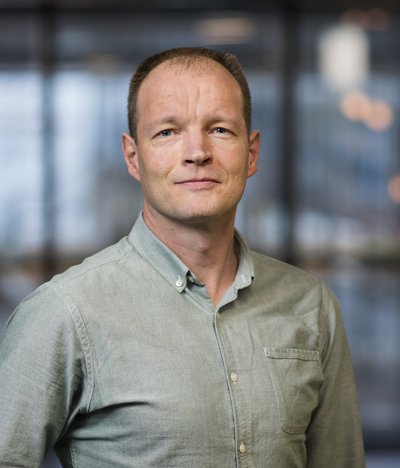Olaf van der Sluis
Department / Institute

RESEARCH PROFILE
Olaf van der Sluis is a Full Professor in the Mechanics of Materials section within the department of Mechanical Engineering at Eindhoven University of Technology (TU/e), realized with support from Philips Research, his main affiliation. His current research interests include fracture mechanics, mechanics and adhesion of thin films, multi-scale mechanics, manufacturing process modelling, and lifetime prediction of microelectronic devices and medical systems. The goal is two-fold: (1) to identify and understand the most relevant failure phenomena that govern the complex behavior of devices during processing, qualification and usage; (2) to support and accelerate the design of functional and structurally robust products. More recently, his research scope has extended to Digital Medical System Design and includes the realization of dedicated digital twins of medical systems in order to improve the innovation, manufacturing and operational phases of these systems.
ACADEMIC BACKGROUND
Olaf van der Sluis obtained his PhD in continuum-based multi-scale modelling of materials in 2001 at TU/e. In 2001, he joined Philips CFT (which became Philips Applied Technologies in 2005) working on various topics such as non-local ductile damage material models and computational homogenization for metal forming processes, as well as fracture mechanics and lifetime prediction of microelectronics devices. In 2011, he joined Philips Research as a senior scientist. Here, he has been working on computational modelling of critical failure mechanisms in medical devices and imaging systems, in order to understand and predict lifetime and optimize reliability through a combination of numerical and experimental tools. Since 2010, he has been a part-time staff member in the Mechanics of Materials section at TU/e (2010: Assistant Professor; 2015: Associate Professor; 2020: Full Professor). He was involved in or in charge of several EU-funded research projects and serves as an expert evaluator for the European Commission. In 2017, he received the Philips Research Outstanding Achievement Award.
Recent Publications
-
R. Willems,Olaf van der Sluis,Clemens V. Verhoosel
Echocardiogram-based ventricular isogeometric cardiac analysis using multi-patch fitted NURBS
Computer Methods in Applied Mechanics and Engineering (2024) -
Robin Willems,Koen L.P.M. Janssens,Peter H.M. Bovendeerd,Clemens V. Verhoosel,Olaf van der Sluis
An isogeometric analysis framework for ventricular cardiac mechanics
Computational Mechanics (2024) -
R. Willems,E. Kruithof,K.L.P.M. Janssens,Matthijs J.M. Cluitmans,Olaf van der Sluis,Peter H.M. Bovendeerd,Clemens V. Verhoosel
Isogeometric-mechanics-driven electrophysiology simulations of ventricular tachycardia
(2023) -
R.L.J.M. Ubachs,Olaf van der Sluis,Scott Smith,Jake Mertens
Computational modeling of braided venous stents - effect of design features and device-tissue interaction on stent performance
Journal of the Mechanical Behavior of Biomedical Materials (2023) -
R. Willems,Clemens V. Verhoosel,Olaf van der Sluis
COMBAT-VT
(2023)
Current Educational Activities
Ancillary Activities
No ancillary activities